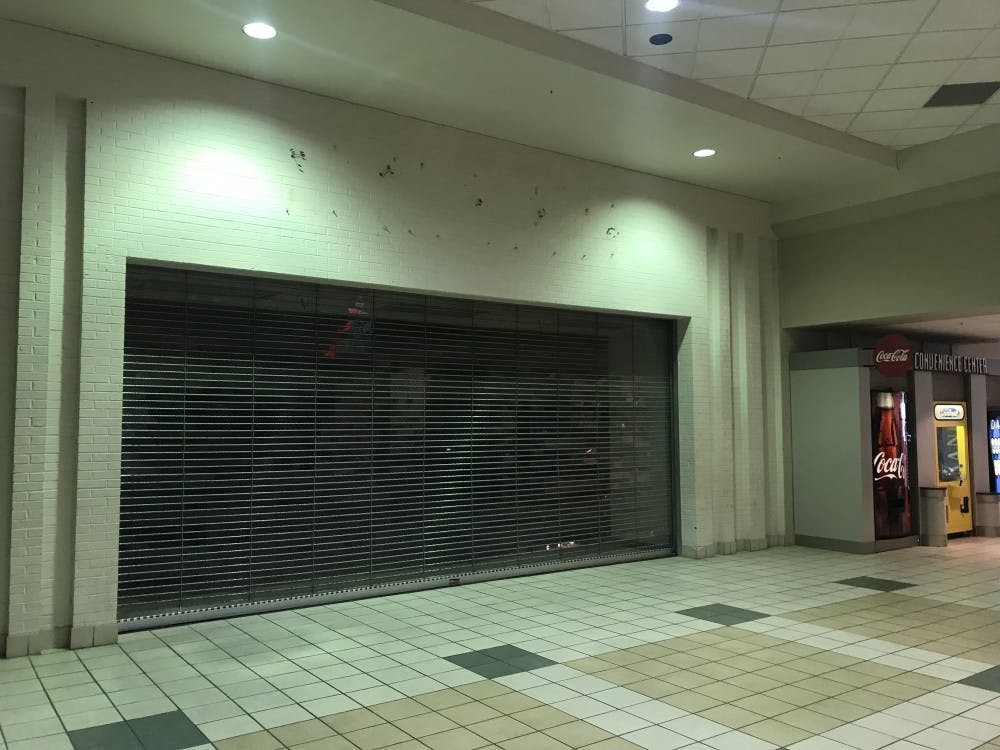Almost 300 people were sitting in the L.A. Pittenger Student Center Ballroom on Wednesday afternoon, and only one asked a question after university treasurer Randy Howard briefed the crowd on the budget situation.
Terry Zivney, ex officio member of the Financial and Budgetary Affairs Committee, a branch of University Council, said he thinks people are hesitant to talk in front of officials and administrators. He said he plans to present feedback from faculty peers at the committee meeting next Monday. He appreciates the administration calling on established committees for feedback, he said.
"The way they're trying to get information up and down is good," he said. "It's not practical to ask for feedback and conversation with the 20,000 people at Ball State."
Before the meeting started, Tony Proudfoot, associate vice president for Marketing and Communications, reported about 220 people were viewing the forum through Web streaming. After the forum, he said about 430 people had tuned in.
Ball State needs to cut $15.2 million from its budget in the next 17 months. This accounts for 2.7 percent of the university's operating budget. In context, Howard said universities in other states are dealing with cuts of 25 to 35 percent. He said 42 states have already made cuts for this fiscal year, and 33 have announced cuts for next year.
Ball State will announce its strategy at the second campus forum March 14. Some of these ideas will be presented to the Board of Trustees March 19 for approval.
The general operating budget, which will be affected by the budget cut, is $285 million. This fund includes overall operation of academic and administrative functions.
Capital and auxiliary funds are separate from the general operating budget. Capital funds are used for things like construction and repair. Auxiliary funds are used for things like dining, facilities, specific gifts and donations.
During Howard's presentation, he outlined three groups of ideas: those the university won't consider, ideas already in process and ideas of significant merit that will be further analyzed.
He said the administration is looking at strategic reductions instead of targeting specific areas.
"We're trying to avoid death by a thousand cuts," he said.
While explaining ideas the university would not be considering at this time, Howard said the university cannot cancel or delay capital projects because funds are set aside for specific purposes. Also, it cannot sell Ball State property because it would result in a one-time savings, and most contracts don't allow the university to sell it once the property has been donated.
Items already in place include increasing grant programs and analyzing debt refinancing.
Howard explained 20 ideas the university is considering. The first one dealt with changes to employee benefits. He said $835,000 has already been saved by changing health care providers. He said the university could save $1.2 million by directing employees to certain hospitals through a process called "steerage." About $700,000 of that savings would affect the general fund. Outsourcing non-core missions and reviewing the athletic budget were other ideas on the list.
Non-core missions refer to items that don't directly affect the educational experience, such as the bookstore and campus dining.
President Jo Ann Gora said the goal is to maintain efficiencies.
"We're looking at non-core missions like building and grounds, dining and facilities more so than cutting staff," she said. "But that may be something that comes out of the balance."
Howard said almost 75 percent of the operating budget comes from salaries and benefits.
"It would be nice to avoid cuts in this area," he said. "It's very hard to have a meaningful cut out of other areas."
To put things in context, he said they would have to decrease fuel and utilities by at least 65 percent to make a meaningful affect, which isn't feasible.
The one question was asked by a student regarding clarification of the core mission. Gora said she thinks people appreciate the fact the administration is sharing so much with people.
"They're waiting to see what decisions we can make," she said. "I think there was a lot of relief."
Brien Smith, chairman of University Senate Agenda Committee, said it may not be so bad that hardly anyone posed questions or comments.
"It may be that people were surprised how well-thought out it was," he said.
Number
300 people in the crowd
430 Web viewers
20 recommendations they're considering
8 they're already doing
7 they won't consider
Where to view the slides
Click here to view the slides from the presentation
What's next
The second campus forum will take place March 14, and will discuss the proposed strategy for budget cuts, which will be presented to the Board of Trustees March 19




